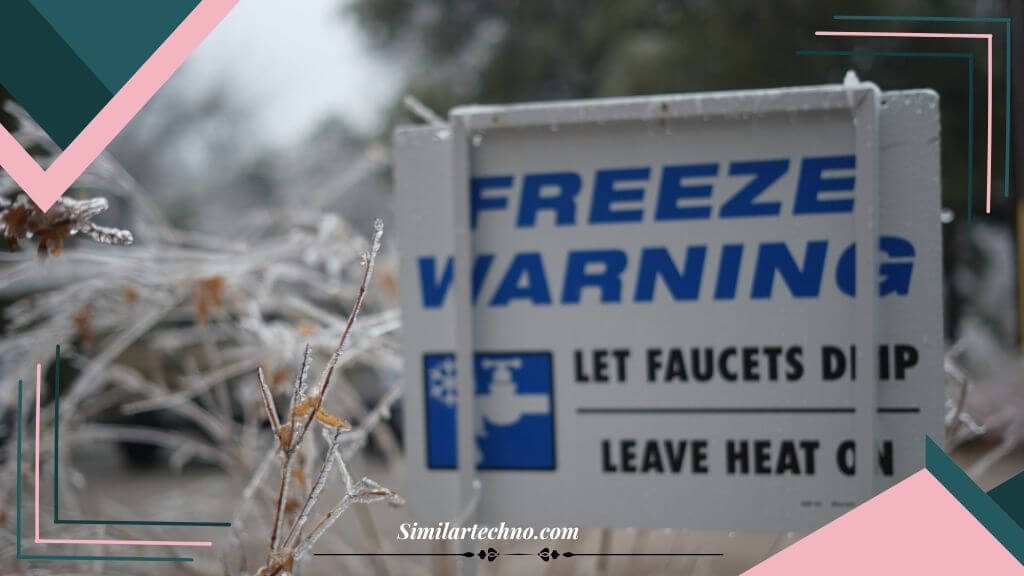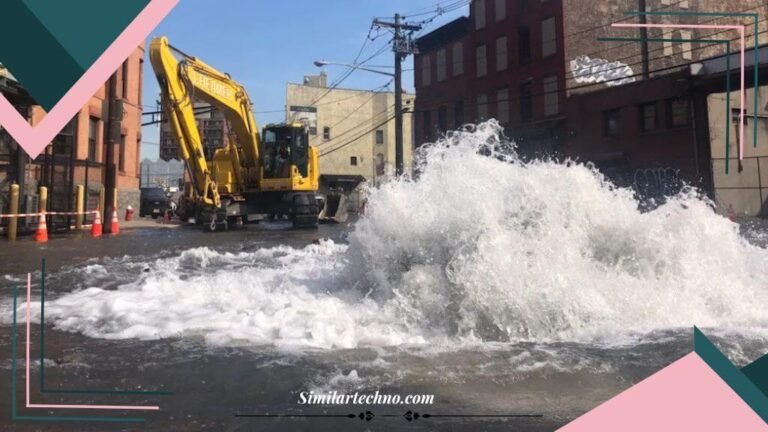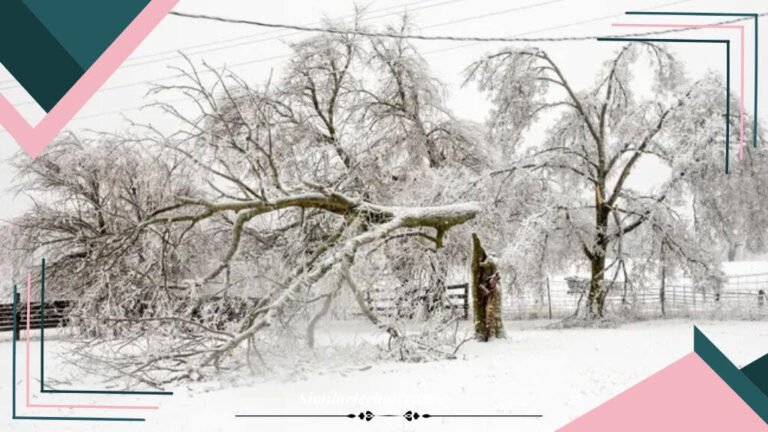A freeze warning is something I’ve learned to take seriously over the years. The first time I ignored one, I woke up to frozen pipes, a dead car battery, and plants that didn’t survive the night. Since then, I’ve made it a habit to prepare whenever a freeze warning is issued. From protecting my home to keeping my pets warm, I’ve picked up some essential tips that can make all the difference. Whether you’re a homeowner, a gardener, or just someone who hates the cold, knowing how to handle a freeze signal can save you a lot of trouble. Let’s dive into what it means and how to stay ahead of the freezing temperatures!

What is a Freeze Warning?
A freeze warning is a weather alert issued when temperatures are expected to drop to 32°F (0°C) or lower for several hours. This warning helps people prepare for freezing conditions that can damage plants, cause pipes to burst, and create dangerous road conditions. Meteorologists issue a freeze warning when cold air moves quickly, especially during the growing season when crops and gardens are at risk. Many people confuse a freeze signal with other cold-weather alerts. A freeze watch is issued before temperatures drop, giving people time to prepare, while a frost advisory is for lighter cold, usually between 33°F and 36°F, which can still harm sensitive plants. Unlike a frost, a freeze signal means the temperature will stay below freezing long enough to cause severe damage. Knowing the difference helps people take the proper steps to stay safe and protect their property.
Why is a Freeze Warning Important?
A freeze warning is important because it gives people time to prepare for dangerously low temperatures. When a freeze warning is issued, homeowners can protect their pipes from bursting, gardeners can cover delicate plants, and pet owners can bring animals indoors. This warning helps prevent costly damage and ensures safety. Cold weather affects daily life in many ways. Roads can become icy, making driving risky, and outdoor workers need extra protection from the cold. Schools and businesses may delay openings to keep people safe. A freeze warning also impacts farmers, as freezing temperatures can destroy crops overnight. Even simple tasks like starting a car or walking outside become harder in extreme cold. People can dress warmly, stock up on supplies, and avoid unnecessary travel by paying attention to a freeze signal. Taking action early can prevent accidents, reduce damage, and keep everyone safe during freezing conditions.
Affects Plants and Crops
A freeze warning can harm plants and crops because freezing temperatures damage their cells. When temperatures drop below 32°F (0°C), the water inside plant cells turns to ice, causing the cells to burst. This can lead to wilted leaves, blackened stems, and even plant death. Farmers face significant losses when a freeze warning occurs during the growing season because crops like fruits, vegetables, and flowers are sensitive to cold. To protect plants, gardeners can cover them with blankets or plastic sheets to trap heat. Farmers often use irrigation systems or large fans to circulate warm air over crops. Some even burn small fires near fields to raise temperatures slightly. Moving potted plants indoors or placing mulch around roots can also help. Farmers and gardeners can reduce damage and keep their plants healthy despite the cold by preparing for a freeze signal.
Read More: Ice Storm Warning: Stay Safe and Prepared! 2025
Freeze Warning and Its Impact on Pipes
A freeze warning can cause pipes to freeze and burst, leading to expensive water damage. When temperatures drop below 32°F (0°C), the water inside pipes begins to freeze and expand. This puts pressure on the pipe walls; if the pressure becomes too high, the pipe can crack or burst. Pipes in unheated areas like basements, attics, and garages are at the highest risk. To prevent damage during a freeze warning, homeowners should let faucets drip slightly to keep water moving. Wrapping pipes with insulation or heating tape also helps keep them warm. Opening cabinet doors under sinks allows warm air to circulate indoor pipes. If pipes freeze, a hairdryer or warm towels can slowly thaw them. Before a freeze signal, these simple steps can help avoid costly repairs and prevent major plumbing issues in freezing weather.
Protect Pets During
A freeze warning can be dangerous for pets, especially those left outside for long periods. Cold temperatures can cause hypothermia and frostbite, making it hard for animals to stay warm. Pets with short fur are especially vulnerable, but even thick-coated animals can suffer in freezing weather. During a freeze warning, bringing pets indoors is best to stay warm and safe. If outdoor shelter is necessary, it should be insulated, dry, and free from drafts. Adding extra blankets or straws can help keep them warm. Fresh water is also essential because bowls can freeze quickly in low temperatures. Pet owners should also limit outdoor walks and dress smaller animals in coats or sweaters. Checking paws for ice buildup or cracks prevents injuries. Taking these precautions during a freeze signal helps pets stay comfortable and healthy despite the cold weather.
How to Stay Safe on the Roads During a Freeze Warning
A freeze warning makes driving dangerous because icy roads reduce traction and increase the risk of accidents. One of the most significant hazards is black ice, a thin layer of ice that is nearly invisible and causes cars to slide unexpectedly. Bridges, overpasses, and shaded roads freeze first, making them especially risky. During a freeze warning, drivers should slow down, leave extra space between vehicles, and avoid sudden braking or sharp turns. Using winter tyres or chains can improve grip on icy roads. Before heading out, drivers should check the weather forecast and allow extra travel time. Keeping an emergency kit with blankets, water, and a flashlight is also a good idea in case of unexpected delays. If roads are too dangerous, staying home is the safest option. Following these precautions during a freeze warning helps prevent accidents and keeps everyone safer on the road.
What to Wear During a Freeze Warning
A freeze warning means temperatures will drop to dangerous levels, so wearing the proper clothing is essential to stay warm. The best way to dress is by layering clothes to trap body heat. Use a base layer that wicks away moisture to keep perspiration off the skin. Add an insulating middle layer made of wool or fleece to stay warm. Finish with a waterproof and windproof outer layer to block cold air and moisture. Thick socks, gloves, and a hat are also necessary since heat escapes quickly from the head, hands, and feet. Boots with good traction help prevent slipping on icy surfaces. Covering the face with a scarf or mask protects against freezing air. Avoid cotton because it holds moisture and makes the body colder. Dressing appropriately during a freeze warning helps prevent frostbite and hypothermia, keeping you comfortable and safe in freezing weather.
Read More: Winter Storm Warning: Stay Safe and Prepare for Impact 2025
How to Prepare Your Home for a Freeze Warning
A freeze warning means it’s time to prepare your home to stay warm during cold weather. To keep your house comfortable, seal any drafts around windows and doors. You can use weatherstripping or draft stoppers to prevent cold air from coming in. To keep the heat inside at night, close the blinds or curtains. Ensure your thermostat is set to a consistent temperature, and consider setting it higher than usual to maintain warmth. It’s also important to check your heating system before a freeze signal to ensure it’s working correctly. Replace filters and clean vents to allow airflow. If you use a fireplace, check the chimney for blockages. Keep extra blankets or space heaters handy if the heating system fails. These steps will help your home stay cosy and safe during a freeze warning, reducing the risk of damage and keeping your family comfortable.
What to Do If You Lose Power During
Staying warm becomes a priority if you lose power during a freeze warning. Begin by layering your clothing to trap body heat. Use blankets, sleeping bags, or other available fabric to stay insulated. Gather in one room and close off different areas to conserve heat. It’s also a good idea to block drafts by covering windows with heavy curtains or blankets. If you have a fireplace, make sure it’s properly ventilated and use it to heat your home safely. Consider using a battery-operated space heater for extra warmth, but never leave it unattended. If you use a generator, always place it outside in a well-ventilated area to prevent carbon monoxide buildup. Avoid using gas stoves or ovens to heat your home, as they can be dangerous. Taking these precautions during a freeze warning helps you stay safe and warm until power is restored.
FAQs
What is a freeze warning?
A freeze warning is issued when temperatures are expected to drop to 32°F (0°C) or lower, posing a risk of freezing conditions.
How do I prepare for a freeze signal?
Prepare by insulating pipes, keeping pets indoors, layering clothing, and ensuring your heating system works properly.
Can I still drive during a freeze signal?
Driving is possible but dangerous due to icy roads and black ice; use caution and drive slowly.
How does a freeze warning affect plants?
Freezing temperatures can damage or kill plants, so cover or bring them indoors to protect them from the cold.
What should I do if I lose power during a freeze warning?
Stay warm by layering clothes, using blankets, and safely using a fireplace or generator for heat.
Conclusion
In conclusion, a freeze warning serves as a crucial alert that signals freezing temperatures are approaching, making it essential to take proactive measures for safety. From protecting your home and plants to dressing warmly and being cautious on the roads, preparing for a freeze warning can help prevent damage and ensure comfort. It’s essential to check heating systems, avoid leaving pets outside, and stay informed about the weather conditions. Using alternative heat sources safely can make all the difference in a power outage. By staying prepared and following safety tips, you can navigate the cold weather confidently and minimize the risks of a freeze signal.







